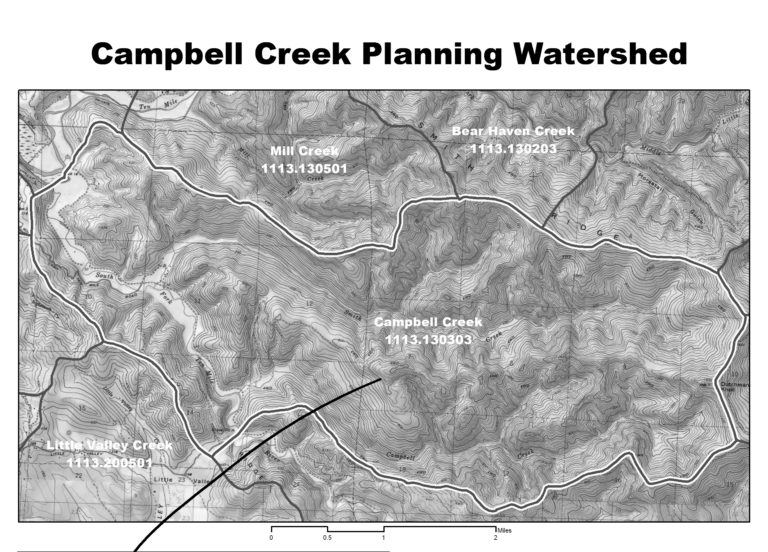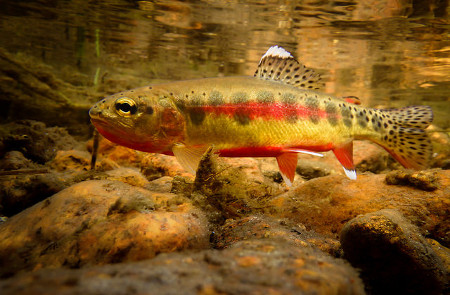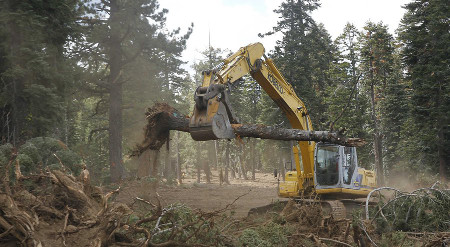Assembly Bill 1492, signed into law in 2012, called for a more streamlined and cost-efficient process for developing and enforcing the state's logging regulations. And it demanded more effective rules ("ecological performance standards")  for safeguarding water quality, wildlife habitat, watersheds and soils, and to meet carbon sequestration and forest restoration objectives.
for safeguarding water quality, wildlife habitat, watersheds and soils, and to meet carbon sequestration and forest restoration objectives.
Among its provisions, A.B. 1492 removed from the timber companies all permit fees they had previously been charged, instead funding their environmental oversight and regulation through a tax on retail sales of lumber products. With the industry completely relieved of the cost of its own regulation, the California consumer and the public now are paying for the reforms and programs that come under the scope of A.B. 1492—most importantly, more efficient and more effective environmental protections for air, water, soils, and wildlife.
With the first pilot project slated to begin on Dec. 15, 2016, it is crucial that the concerned public be fully engaged and that full transparency and accountability to the citizenry is guaranteed. After all, we're paying for it!
This project will collect, organize, and provide a basis for evaluating environmental data resulting from past  logging operations in the Campbell Creek watershed northeast of Fort Bragg. The end result will be findings and recommendations that will inform the long-overdue, fundamental aim of responding to cumulative impacts caused by timber extraction. These findings can be reasonably extrapolated from Campbell Creek to other watersheds, as well as help in locating where forest and watershed restoration steps can and should be taken.
logging operations in the Campbell Creek watershed northeast of Fort Bragg. The end result will be findings and recommendations that will inform the long-overdue, fundamental aim of responding to cumulative impacts caused by timber extraction. These findings can be reasonably extrapolated from Campbell Creek to other watersheds, as well as help in locating where forest and watershed restoration steps can and should be taken.
The primary goal of the pilot project(s) must be to determine actual forest conditions. What conditions now existing in the forest? What is the character of the soils, watercourses, wildlife habitat, etc., in the wake of both logging and logging regulations that have come into being since the enactment of California's Forest Practice Act in 1973? It is only after these baseline conditions are set forth–and discussed and agreed upon by all the stakeholders—that we can begin to fashion a meaningful and effective set of approaches to analyze and regulate cumulative watershed effects.
Public pressure by Forests Forever, its supporters, and allies has significantly shaped and improved the mission and focus of the pilot project. In 2015 and 2016 the successive concept papers outlining the pilot project reflected a significant amount of our input.

For example, our comments made a difference quite recently with regard to: clarifying the composition of the Pilot Project Working Group (PPWG) and the level of representation by each stakeholder group; sharpening the focus on ascertaining existing baseline conditions in the forest at the outset (as the latest concept paper states, "thoroughly and accurately characterize[ing] current biophysical and ecological conditions on the planning watershed [emphasis added]); increasing the emphasis on the effectiveness of new rules and procedures, not just their "efficiency," which refers mainly to their affordability; and moving toward a more-practical approach to PPWG management by "consensus process" in carrying out its work.
Gienger is joined on the PPWG by representatives of three highly regarded advocacy groups concerned with forest and salmon fishery conservation—Save the Redwoods League, the Environmental Protection Information Center, and the Pacific Coast Federation of Fishermen's Associations. In addition there will be two fisheries scientists, a respected watershed restoration consultant, and a tribal representative from the Sherwood Valley Rancheria Band of Pomo Indians.
"The PPWG also consists of two representatives of Lyme Redwood Forest Co. and an executive from the leading timber industry lobby group, the California Forestry Association," said Forests Forever Executive Director Paul Hughes. "It will take unrelenting focus, clarity, hard work, and courage on the part of the PPWG members to make sure the pilot project activity is not subject to undue pressure, subtle or overt, that could divert it from its primary purposes—to ensure not only efficiency in timber-rules reform but also its effectiveness in safeguarding, soil, water, wildlife, and other public trust values.

"That said, we're about to begin a process that has been years in the making. It's very exciting."
Besides the just-mentioned challenge several others loom. Chief among them is the influence of the so-called Effectiveness Monitoring Committee. This panel, consisting overwhelmingly of industry and state agency officials, as well as scientists who are not necessarily independent of the timber industry, predates the PPWG and thus far has the final say on which pilot project recommendations are sent forth to the state Board of Forestry for adoption or rejection.
It also remains unclear whether additional and adequate funding—potentially available from A.B. 1492's ample lumber tax revenue—will be made available to compensate the non-industry and non-agency PPWG members (chiefly, the independent environmental advocacy members), making it easier for them to participate fully on a par with the other panel members who do so covered by the compensation of their employers.